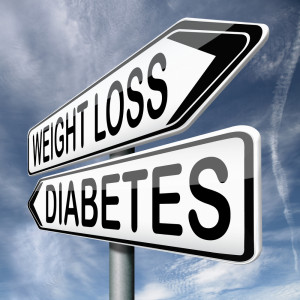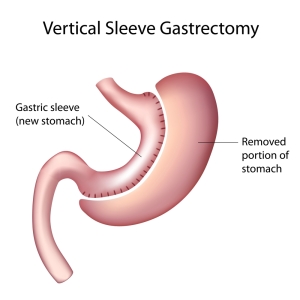Weight gain is a common complaint in general practice, particularly in women who tend to be more weight and health conscious than their male counterparts. Women tend to gain weight more in the hip and thigh regions and around their breasts. This is different from males who accumulate fat around the waist. Weight gain is a complex life style problem that involves attitudes, lack of exercise and eating the wrong food groups, coupled often with hidden denial. I have shown in a separate chapter regarding this topic that weight loss and lifelong control of it through dietary changes is only one of the treatment modalities to counteract weight gain. Other parts are regular exercise and the internal hormonal adaptation that takes place when you commit yourself to a zone diet meal plan. This treats the insulin resistance, which from a medical point of view is the silent underlying cause of the weight problem as the hypoglycemic reactions are what makes people crave starch and sugar containing food. Ultimately you prevent the development of diabetes.
The reward of this change in diet and starting to exercise are improved emotional feelings, fitness and the internal satisfaction to know that you have achieved something that is easier than many people believe. This will pay dividends as you will be staying younger looking for years to come and you will stay energetic until a ripe old age (the longevity bonus of a diet/exercise program).
Some people find it impossible to lose weight with diets and exercise. In some of these cases (when men weigh 100 lb.. more or women 80 lb.. more than their normal weight should be) the patient and physician may decide that a gastric bypass surgery would be the best solution. This is a complex topic and has its pluses and minuses. For one thing, it is a permanent procedure where a longitudinal incision is made and 85% of the stomach tissue is removed. The remainder of a hollow tube is stitched together and this is the new, much smaller stomach. There is less food absorption, more weight loss, but there can be side-effects such as the dumping syndrome when sugary food is taken in.
This is the vertical sleeve gastrectomy that I described and that is depicted here. Another surgery is a laparoscopic adjustable gastric band, which restricts the amount of food that can get into the stomach.
References:
1. The Merck Manual, 7th edition, by M. H. Beers et al., Whitehouse Station, N.J., 1999. Chapter 235.
2. B. Sears: “Zone perfect meals in minutes”. Regan Books, Harper Collins, 1997.
3. Ryan: Kistner’s Gynecology & Women’s Health, 7th ed.,1999 Mosby, Inc.
4. The Merck Manual, 7th edition, by M. H. Beers et al., Whitehouse Station, N.J., 1999. Chapter 245.
5. AB Diekman et al. Am J Reprod Immunol 2000 Mar; 43(3): 134-143.
6. V Damianova et al. Akush Ginekol (Sofia) 1999; 38(2): 31-33.
7. Townsend: Sabiston Textbook of Surgery,16th ed.,2001, W. B. Saunders Company
8. Cotran: Robbins Pathologic Basis of Disease, 6th ed., 1999 W. B. Saunders Company
9. Rakel: Conn’s Current Therapy 2001, 53rd ed., W. B. Saunders Co.
10. Ruddy: Kelley’s Textbook of Rheumatology, 6th ed.,2001 W. B. Saunders Company
11. EC Janowsky et al. N Engl J Med Mar-2000; 342(11): 781-790.
12. Wilson: Williams Textbook of Endocrinology, 9th ed.,1998 W. B. Saunders Company
13. KS Pena et al. Am Fam Physician 2001; 63(9): 1763-1770.
14. LM Apantaku Am Fam Physician Aug 2000; 62(3): 596-602.
15. Noble: Textbook of Primary Care Medicine, 3rd ed., 2001 Mosby, Inc.
16. Goroll: Primary Care Medicine, 4th ed.,2000 Lippincott Williams & Wilkins
17. St. Paul’s Hosp. Contin. Educ. Conf. Nov. 2001,Vancouver/BC
18. Gabbe: Obstetrics – Normal and Problem Pregnancies, 3rd ed., 1996 Churchill Livingstone, Inc.
19. The Merck Manual, 7th edition, by M. H. Beers et al., Whitehouse Station, N.J., 1999. Chapter 251.
20. The Merck Manual, 7th edition, by M. H. Beers et al., Whitehouse Station, N.J., 1999. Chapter 250.
21. Ignaz P Semmelweiss: “Die Aetiologie, der Begriff und die Prophylaxis des Kindbettfiebers” (“Etiology, the Understanding and Prophylaxis of Childbed Fever”). Vienna (Austria), 1861.
22. Rosen: Emergency Medicine: Concepts and Clinical Practice, 4th ed., 1998 Mosby-Year Book, Inc.
23. Mandell: Principles and Practice of Infectious Diseases, 5th ed., 2000 Churchill Livingstone, Inc.
24. Dr. John R. Lee, David Zava and Virginia Hopkins: “What your doctor may not tell you about breast cancer – How hormone balance can help save your life”, Wellness Central, Hachette Book Group USA, 2005. On page 256 and 257 Dr. Lee describes how progesterone can be used as a cream to treat PMS.
25. Dr. John R. Lee: “Natural Progesterone- The remarkable roles of a remarkable hormone”, Jon Carpenter Publishing, 2nd edition, 1999, Bristol, England.








